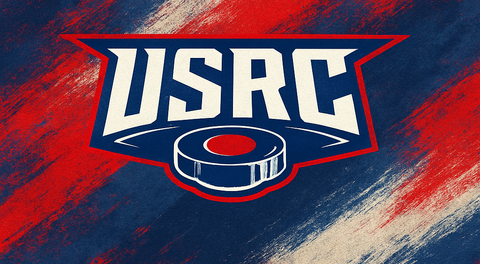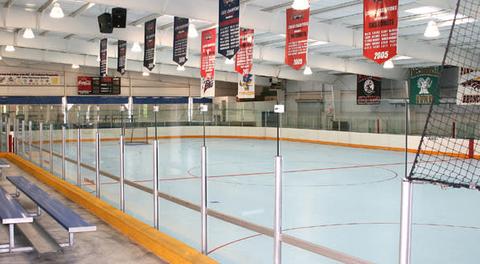Rules
US Roller Cup (USRC) is proud to introduce an innovative approach to developing our rulebook, putting the power directly into the hands of players, fans, and coaches. We believe that by involving the roller hockey community in the decision-making process, we can create a rulebook that truly represents the collective voice of the sport.
How it Works:
At USRC, we value the input of every participant, recognizing that roller hockey is played in various exciting variations across the sport. To ensure fairness and inclusivity, we have established a system where players, fans, and coaches can actively participate in the rule-making process. Through social media platforms, participants will have the opportunity to vote on specific rules before each event.
Rule Voting:
The rule voting process will encompass multiple aspects of the game, ranging from the type of puck used to the length of periods. By engaging the roller hockey community in these decisions, we aim to resolve differences and find common ground through consensus.
Achieving Consensus:
Certain aspects of the game may require continuous voting before each tournament until a consistent majority is achieved. This ensures that all voices are heard, and the rules are established with the support of a substantial portion of the roller hockey community.
Permanently Encoded Rules:
Once a consistent majority is reached on a particular rule, it will be permanently encoded into the USRC rulebook. By doing so, we ensure transparency, stability, and legitimacy in the game's regulations, making it a true representation of the roller hockey community's preferences.
Our Commitment:
At USRC, we are committed to fostering an environment of collaboration, fairness, and adaptability. By embracing this innovative rulebook development approach, we hope to not only enhance the game but also strengthen the sense of ownership and pride within the roller hockey community.
Join the Movement:
Be part of the USRC revolution! Your voice matters, and we want you to actively shape the future of roller hockey. Stay connected with us on social media to participate in the rule voting process and witness firsthand how your decisions impact the game. Together, let's elevate roller hockey to new heights and forge a rulebook that reflects the spirit and passion of our incredible sport.
GENERAL RULES
- Every player must sign a waiver before playing
- Rosters must be in a week before the event
- You can only add emergency players if your team drops down to 4 skaters and 1 goalie. In that event, you are allowed to add 1 additional skater.
- In the event a goalie is late due to circumstances out of their control, a team may use an EBUG. However, this EBUG cannot be from a higher division, but it can be a goalie in the same division. We will not hold games for late goalies.
- USRC follows the same age cutoffs for youth as USA Hockey. For adult divisions (30+, etc) you are eligible as long as you turn the minimum age in the same calendar year as the event
- 8 goal mercy rule
- Games can start 30 minutes early
- Teams must be ready to play (4 skaters 1 goalie ready to take a faceoff) by the end of the 3 minute warm up, regardless if the tournament is running ahead, on time, or behind. If a team is not ready to play, then they will forfeit. If both teams are not ready to play, then the game will result in a tie/double forfeit. Teams can use their timeout (60s) to delay the start of the game.
- Club players may only play Club. This is to ensure that the club division is truly for club level players.
- Each team may have a maximum of two players playing down one division, for adult divisions only.
- Your player level is the highest level you are playing at for that tournament. Meaning that we are no longer going to allow players to "play up a division". For example, if you are playing in Silver and Bronze, then you are a Silver level player for that event. That is regardless of whether or not you more regularly play Bronze.
- Players can only play down one division. Gold players shouldn't want to play bronze anyway. Most importantly, the bronze players don't enjoy when that happens.
- 30+ and 40+ do not count towards roster restrictions.
- We will begin to have Platinum divisions at our event. Platinum divisions (for adults) is the highest level that does not feature a cash prize, and also does not have the same roster restrictions as other divisions. This is to allow pro and gold players the opportunity to play multiple divisions with a much higher level of competition than if they were to drop down divisions and spread their talent amongst those teams. For example, platinum teams could be a mix of half pro and half gold players. Platinum restrictions also don't count for Gold, because it is supposed to be a mix of the highest non-pro (Gold) and Pro. Meaning that a Gold team can have more than 2 players on it playing Platinum. Platinum restrictions do count for other divisions. Meaning that if you play platinum you cannot play Gold and Silver, but you can play Gold.
- 3 penalties in one game results in an automatic ejection of that player for the remainder of just that game.
- Two 12 minute stop time periods
- Voted Yes on Jailbreak goals
- 90 second minors, 180 second double minors, 5 minute majors
- Powerplay team can decide face-off dot in the offensive zone
- Round Robin games that end in ties will go to a 3 round shootout, then to a tie
- A player may be used multiple times in a shootout (Oshie Rule)
- Playoff games that end in ties will go 4v4 continuous, sudden death overtime
- Teams are given 1 timeout per game
- Delayed call half-rink violations are in effect
- USRC uses video to enforce suspensions
- If a team has clinched a playoff spot prior to playing their last round robin game and they no show their remaining round robin game(s), then the will lose their playoff spot to the next available team
- Players must play in round robin in order to play in playoffs
TIE BREAKERS
- Wins are worth 3 points, OT wins are worth 2 points, OT loss is worth 1 point, regulation loss is worth 0 points
- Points > Head to Head > Wins > Regulation Wins > Goal Differential > Goals Against > Goals For




